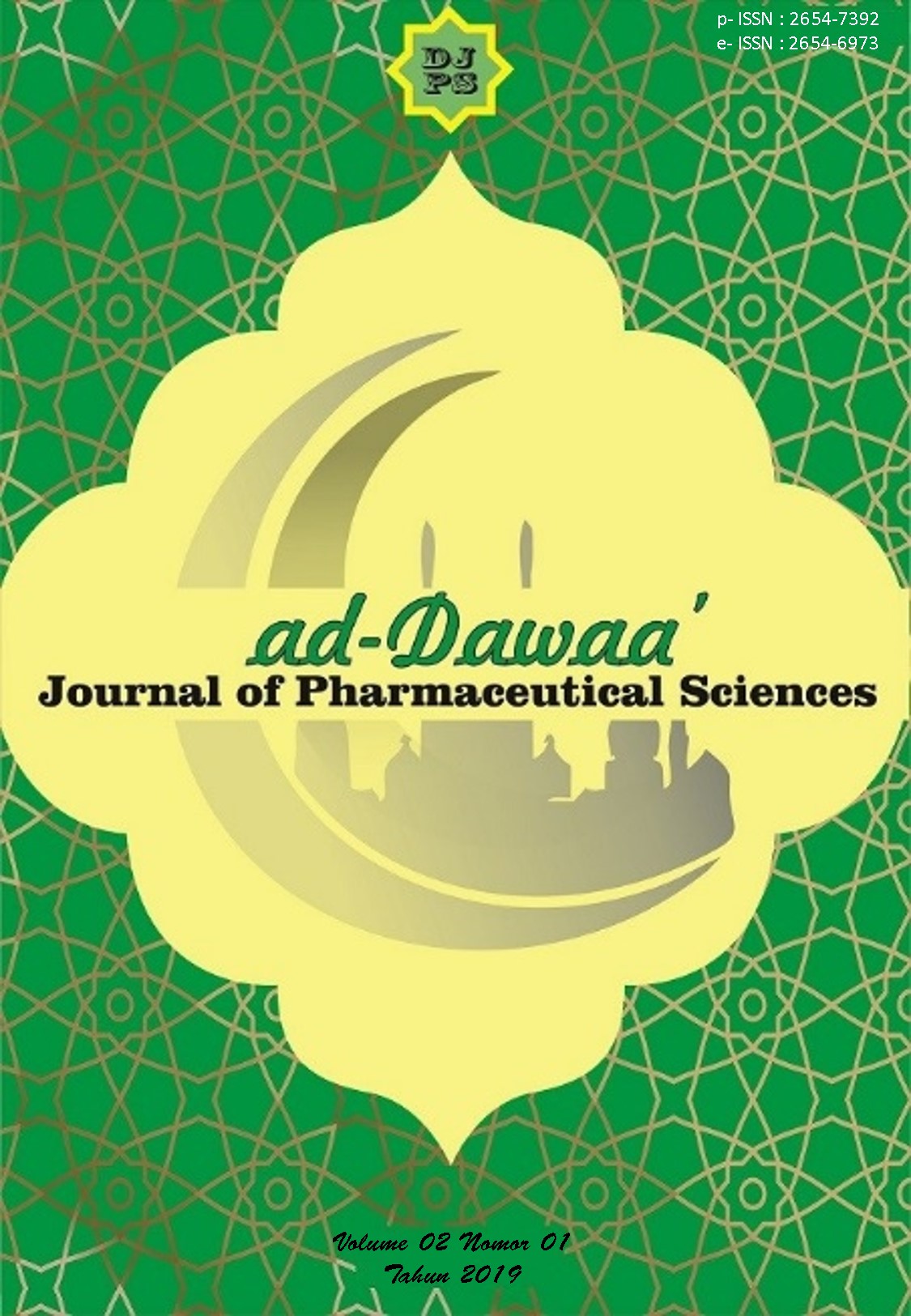Ekstrak Patikan Kebo (Euphorbia hirta L.) Menurunkan Hitung Eosinofil Bronkus pada Tikus Wistar Model Asma Alergi
Abstract
Paparan alergen pada saluran napas secara berulang memicu terjadinya reaksi asma alergi. Asma alergi diinduksi oleh degranulasi sel mast yang melepaskan mediator proinflamasi seperti histamin, leukotrien, dan prostaglandin yang memicu terjadinya inflamasi bronkus yang ditandai dengan peningkatan eosinofil bronkus. Peningkatan eosinofil bronkus dapat ditekan oleh asam kafeat dan flavonoid. Penelitian ini bertujuan untuk mengetahui pengaruh pemberian ekstrak patikan kebo terhadap hitung eosinofil bronkus pada tikus Wistar model asma alergi. Subyek penelitian berupa 25 ekor tikus Wistar jantan dengan berat badan ± 200 g dan berumur 6 minggu, dibagi dalam 5 kelompok yaitu: Kontrol (K), Asma alergi (A), ekstrak patikan kebo 10 (P1), 15 (P2), 20 mg/tikus/hari (P3). Hitung eosinofil bronkus postes diukur setelah 28 hari perlakuan. Hitung eosinofil bronkus dianalisis dengan SPSS versi 23.0 menggunakan uji One Way ANOVA dan dilanjutkan uji post hoc multiple comparison Tukey. Tingkat kemaknaan digunakan p<0,05. Hitung eosinofil bronkus tikus P1, P2, dan P3 lebih rendah secara bermakna dibanding tikus Asma Alergi (p<0.05). Patikan kebo mampu menurunkan jumlah eosinofil bronkus pada tikus Wistar model asma alergi.
Downloads
References
Asha, S., Thirunavukkarasu, P., & Mohamad, S. (2015). Phytochemical screening of Euphorbia hirta linn leaf extracts. World J Pharm Sci, 3(6): 1104-1112.
Busse, W., & Lemanske, R. (2001). Asthma. N. Engl. J. Med. , 344: 350-362.
Carter, R., & Bradding, P. (2011). The role of mast cells in the structural alterations of the airways as a potential mechanism in the pathogenesis of severe asthma. Curr Pharm Des, 17(7):685–98.
Dorland, W. N. (2002). Kamus Kedokteran Dorland. Jakarta: EGC.
Galli, S., & Tsai, M. (2012). IgE and mast cells in allergic disease. Nat Med, 18(5):693–704.
Gangwar, R., Landolina, N., Arpinati, L., & Levi-Schaffer, F. (2017). Mast cell and eosinophil surface receptors as targets for anti-allergic therapy. Pharmacol Ther, 170:37–63.
Gould, H., & Sutton, B. (2008). IgE in allergy and asthma today. at Rev Immunol, 8:205–17.
Laprise, C., Sladek, R., Ponton, A., Bernier, M., Hudson, T., & Laviolette, M. (2004). Functional classes of bronchial mucosa genes that are differentially expressed in asthma . BMC Genomics, 5: 21.
Majid Y, M., Hugh, S., Akram, J., Par, S., & Peter J, O. (2001). Caffeic Acid, Chlorogenic Acid, And Dihydrocaffeic Acid Metabolism: Glutathione Conjugate Formation. DMD , 29:1432–1439.
Rosenberg, H., Phipps, S., & Foster, P. ( 2007). Eosinophil trafficking in allergy and asthma. J Allergy Clin Immunol., 119:1303–10.
Toshio, T., & Ryo, T. (2013). Flavonoids and Asthma, Nutrients. Nutrients, 5(6): 2128–2143.
Weng, Z., Zhang, B., Asadi, S., Sismanopoulos, N., A, B., Fu, X., . . . Theoharides, T. (2012). Quercetin is more effective than cromolyn in blocking human mast cell cytokine release and inhibits contact dermatitis and photosensitivity in humans. PLoS, 7(3): e33805.
Yoosoo, Y., Jung-Mi, O., Paul, H., Jae Yoon, S., Byoungjae, K., Jonghyeok, S., . . . Dae-Hyuk, K. (2013). Polyphenols differentially inhibit degranulation of distinct subsets of vesicles in mast cells by specific intercation with granule-type-dependent SNARE complexes. Biochem J, 450(3): 537-546 .
Once an article was published in the journal, the author(s) are:
- granted to the journal right licensed under Creative Commons License Attribution that allows others to share the work with an acknowledgement of the work's authorship.
- permitted to publish their work online in third parties as it can lead to wider dissemination of the work.
- continue to be the copyright owner and allow the journal to publish the article with the CC BY-SA license
- receiving a DOI (Digital Object Identifier) of the work.


1.png)